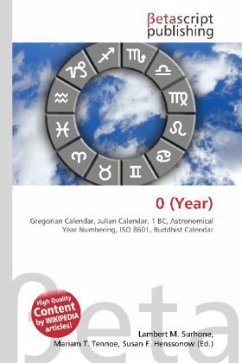Please note that the content of this book primarily consists of articles available from Wikipedia or other free sources online. "Year zero" does not exist in the widely used Gregorian calendar or in its predecessor, the Julian calendar. Under those systems, the year 1 BC is followed by AD 1. However, there is a year zero in astronomical year numbering (where it coincides with the Julian year 1 BC) and in ISO 8601:2004 (where it coincides with the Gregorian year 1 BC) as well as in all Buddhist and Hindu calendars. Time is traditionally treated as a discrete variable, and the labels as counts, using cardinal numbers (e.g. one, two, three, ...) or ordinal numbers (e.g. first, second, third, ...). intervals are named for their ending points, hence the first year counted after the starting point will come immediately after the first year counted before the starting point. This is used in common usage, in historiography or in reckoning a person''s age. However, in some contexts, however, such as astronomy, it might be more convenient to include a "year zero", preceding year 1 to ease calculation.
Bitte wählen Sie Ihr Anliegen aus.
Rechnungen
Retourenschein anfordern
Bestellstatus
Storno








